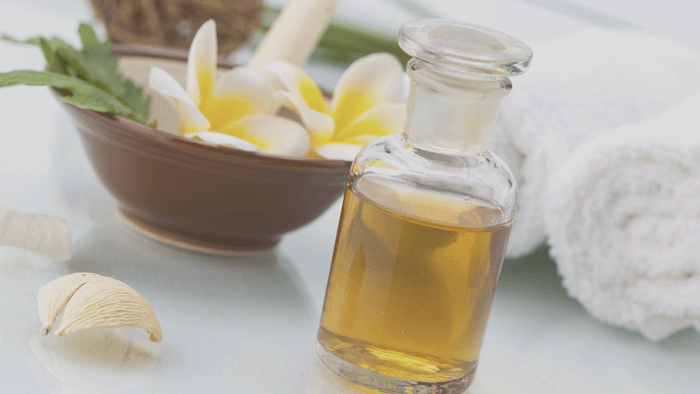
03 Apr Beauty Secrets from Polynesian Women
All around the world, the Polynesian vahine became iconic in terms of beauty thanks to their beautiful hair and golden glow tanned skin. Today, we reveal the beauty secrets behind their looks and their use of traditional beauty oils, which has been a tradition passed down from mothers to daughters and has been for thousands of years.
Here are two oils which remain a Polynesian beauty staple.
Monoï Oil
Monoï oil is an ancient Polynesian beauty secret, made using the traditional, century-old Polynesia method in Tahiti of soaking the petals of Tahitian gardenias (best known as Tiaré flowers) in refined coconut oil.Although the exact date as to when monoï was first created remains unknown, its origins can be traced back 2000 years to the Maohi people, the indigenous Polynesians, whose priests used the oil in worship ceremonies to anoint new-borns and purify objects. Till this day, Tahitians hold monoï (pronounced mah-noy), which translates to ‘sacred oil’, in high estimation and for good reason. This simple, sweet-smelling oil continues to play a large part of Polynesian beauty rituals and offers numerous benefits that range, quite literally, from head to toe. Many Polynesian families have their own monoï recipes, many of them spiked with additional aromatics such as ylang-ylang, sandalwood, vanilla, and basil.
Similar to ancient botanical-based beauty boosters used in far-flung region, many of monoï’s fabled benefits have been scientifically substantiated in recent years. The flowers contain high levels of methyl salicylate, known for its purifying and anti-inflammatory qualities and during the 15-day maceration, these active properties are transferred to the oil. And although coconut oil is an effective moisturiser for skin and frazzled strands—it protects the skin’s lipid barrier and easily penetrates hair follicles, preventing protein and water loss—the coral-island-grown coconuts used especially for monoï have superpowers: they contain additional protein and produce a silkier, less greasy oil than those grown elsewhere.
Benefits of monoï for the skin:
- Protects the skin against external elements.
- Helps the skin appear more supple and softer.
- Increases skin hydration both immediately and in the long term.
- Heals eczema or skin rashes.
- Heals skin quickly from sunburn.
- Relieves dry and itchy skin.
- Combats stretch marks.
In a clinical study from the Monoi Institute, when Monoi was used on the skin against jojoba oil, shea butter and Vaseline oils, the moisturising benefits of monoï was gradual and longer lasting against its competitors.
Benefits for the hair:
- Penetrates the hair shaft, helping the cuticles lay flat and stay smooth.
- Adds brilliance, shine and softness to the hair.
- A restorative and restorative action that helps to combat dandruff.
- Increases hair’s elasticity and strength from its high concentration of vitamin E.
- Prevents free radical damage from its high concentration of anti-oxidants.
In clinical studies from the Monoi Institute, subjects saw fewer split ends, fewer dry ends and overall improvement in the general condition of their hair. Under the experimental conditions of the study, the Monoi de Tahiti “helped to improve the shine and overall look of the hair. Hair fibres were revitalised and keratin scales were more compact and presenting in a homogenous surface.” In another study from the Monoi Institute, it was recorded that the oil improved the general appearance of the hair by protecting, strengthening and beautifying the hair fibres.
Additional Applications
In addition to its beautifying properties, monoï oil can also be used to treat itchy insect bites and fade stretch marks, and an effective insecticide when mixed with lemongrass.
Tamanu oil
Less known than monoï, yet equally effective is tamanu oil. Thousands of years ago, native Polynesians discovered the oil as a wonderful skin-care aid, skin protector and cosmetic. They learned how to extract the oil from the tamanu nut, which they obtained by drying kernels of the fruit of the ‘ati’ tree. Tahitian and other Polynesian women use it profusely in their daily skin care regimen to protect their skin from hot sun, high humidity, and the sea winds laden with salt. Tamanu oil is indeed another well-kept beauty secret of Polynesian women who are noted for their wonderful complexions and the oil with its spicy fragrance, rich in antioxidants, can really do miracles for your skin. It is cicatrising, anti-fungal and antibacterial and promotes microcirculation. It is used as antiseptic and against wrinkles, stretch marks and burns. It too is recommended for skin ailments as varied as eczema, shingles and varicose veins.
Benefits of Tamanu oil
- Treats blemishes
- Fades stretch marks
- Treats ingrown hairs
- Heals rashes
- Soothes dry skin
Here’s a simple Tamanu oil recipe, inspired by Polynesian women, you can try at home!
Ingredients:
- Olive/argan/sweet almond oil
- Calophylluminophyllumseed oil (tamanu)
- Helichrysum/cedar/niaouli essential oil
Add 20 ml of neutral oil (olive, argan or sweet almond) to 30 ml of good quality of (tamanu). Flavour the mixture with 60 drops of Helichrysum essential oil. If your budget is tight, then opt for 30 drops of cedar essential oil and 30 drops ofniaouli essential oil.
